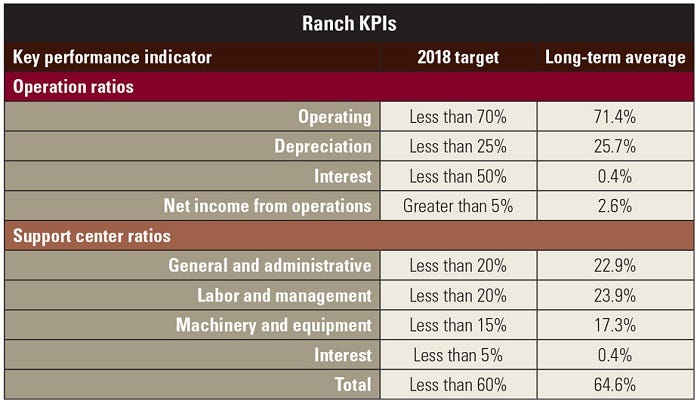
The cost of labor and management on US ranches appears to be creeping out of control.
"About 70% of the time, when ranches have an expense problem, it's labor and management,"
says economist Stan Bevers. "It just keeps creeping up."
Bevers spent his career working for the Texas A&M AgriLife Extension Service and implementing the Cow-calf Standardized Performance Analysis for scores of ranches in Texas, Oklahoma and New Mexico. He retired from Texas Extension in 2016 and began working as a private consultant, creating analytical reports based on Key Performance Indicators (KPIs) for his ranching customers.
The average size of the ranches in his database is 1,500 cows, with some having many more and some with fewer cows. Many are large, corporate-owned ranches.
Bevers discovered these cost problems at least partially because the KPIs he uses to break out ranch expenses are different than in typical income and expense statements. You can read about KPIs at this website.
In this vein, an important set of KPIs that Bevers uses are called the "support center ratios." These four break the fixed, or indirect, ranch costs into four easily identifiable categories:
1. General and administrative costs
2. Labor and management costs
3. Machinery and equipment costs
4. Interest costs
Although labor and management costs typically are not included in ranch fixed costs, Bevers explains that labor and management actually are relatively fixed and inflexible and need to be accounted that way.
He adds that while the direct expenses of cow-calf production such as purchased feed, supplements, mineral and vet costs have generally increased over time, the indirect costs of operating the ranch have soared to new highs.
Fixed costs can be the hardest to change among the expenses ranch managers face, and yet they consume 65 cents of every dollar the average ranch brings in, says Bevers. In part, this has helped drive the rising cost of keeping a cow. In the past thirty years, annual cow costs have risen from under $400 per female to over $850 per female in 2016. This is based on SPA and KPI calculations done by Bevers.
Ranch managers have expressed to Bevers they can't do anything about labor costs, because if they don't pay the high wages, provide benefits and give bonuses, their good employees will go to work for a neighboring ranch. Further, Bevers says the salary and benefit package expectations of young, new hires have begun to exceed what some ranches may be able to pay.
A distant second among the problem issues in ranch fixed costs is interest expenses, although that is probably in only 5-10% of his client operations, Bevers believes.
The take-home lesson from Bevers' KPI data is that 65 cents from every dollar earned in ranch income is burned up by indirect costs, and it's getting worse. That leaves only 35 cents of every dollar earned to pay direct costs and record a profit.
Despite the recent rally, cattle prices are expected to move lower over the next couple of years as beef production increases. Obviously, that will result in lower ranch revenue in the face of these growing expenses. Bevers warns if indirect expenses are not lowered, which is very difficult to do, the support center ratios will increase over the next couple of years and ranch profits could get even worse.

Analyst Stan Bevers from Texas says most ranches with economic problems are spending too much on labor and management.
Descriptions of 4 KPI support center ratios
A. General and administrative ratio
Calculation: Total general and administrative expenses divided by total revenue.
Goal: Less than 20% of total revenue.
B. Labor and management ratio
Calculation: Total labor and management expenses divided by total revenue.
Goal: Less than 20% of total revenue.
C. Machinery and equipment ratio
Calculation: Total machinery and equipment expenses divided by total revenue.
Goal: Less than 15% of total revenue.
D. Interest ratio
Calculation: Total interest paid divided by total revenue.
Goal: Less than 5% of total revenue.
The rabbit has been chased too far
Statistics show cost of carrying cows some time ago outstripped productivity gains in the cow-calf industry, Bevers says.
"An entire beef industry has been created to assure and/or increase the productivity of breeding cows," he adds. "Yet, most recent datasets and studies have pointed to a maximized production plateau that is highly dependent upon the amount of moisture the ranch receives."
"At the same time, the costs to maintain a breeding female, and subsequently to produce and wean a calf have increased dramatically," he says. "Over the past thirty years, annual cow costs have risen from under $400 per female to over $850 per female in 2016. "
About the Author(s)
You May Also Like




